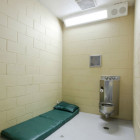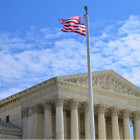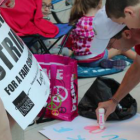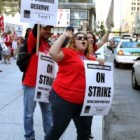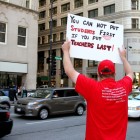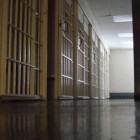Suspects Held Without bail in Wake of Hadiya Pendleton Funeral, Michelle Obama Visit
|
By Safiya Merchant and Eric Ferkenhoff
Three days after Michelle Obama flew to Chicago for the funeral of 15-year-old Hadiya Pendleton, the slain honor student who performed at last month’s presidential inauguration, a judge ordered two men to be held without bail on first-degree murder charges amid the swirl of politics set off by her death. In laying out the charges, prosecutors detailed how Hadiya, a majorette with her King College Prep high school band, got caught up as the unintended target of a gang retaliatory shooting – allegedly by suspects Michael Ward, 18, and Kenneth Williams, 20. The men also face charges of attempted murder and various weapons offenses. During a Monday evening news conference to announce the arrests, police brass and some politicians seized on the weapons charges as evidence that Chicago, the state of Illinois and the nation need to toughen the very gun laws for which at least one of the suspects had previously served time. (Had sentences for weapons offenses here and elsewhere been more strict, this reasoning goes, Hadiya might not have been slain as the shooter would still be locked up.)
Whatever the case, there is little denying that Hadiya’s death is the subject of wide debate even as it hit so personally for those who knew her.



